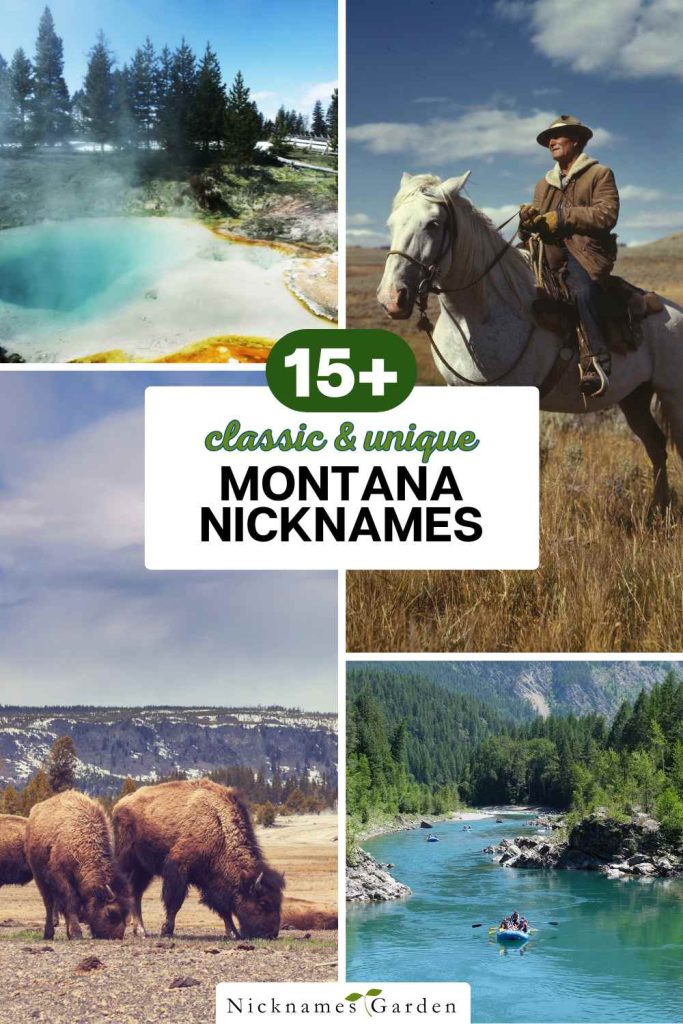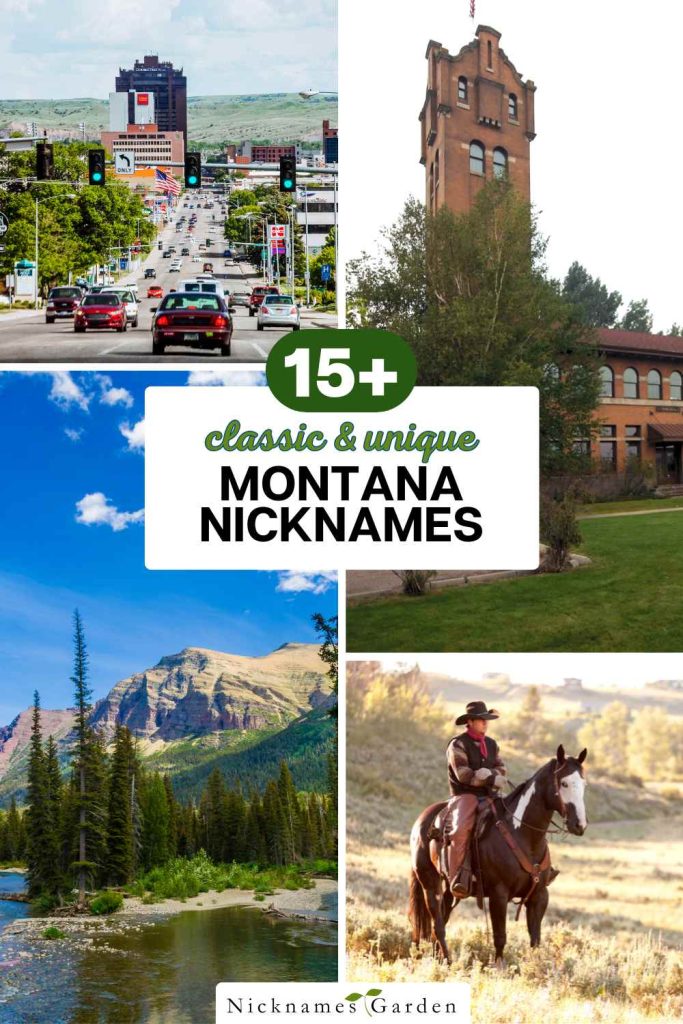Montana, a state of vast landscapes and rich history, boasts a variety of nicknames that reflect its diverse culture and natural beauty.
From “The Treasure State” to “Big Sky Country,” each nickname tells a unique story about Montana’s heritage and charm.
Quick Guide To The Montana Nicknames
The Treasure State: Reflects Montana’s rich mineral reserves and mining history.
Big Sky Country: Captures the vast, unobstructed views of the sky, characteristic of Montana’s landscape.
The Last Best Place: Describes Montana as one of the last unspoiled and idyllic places in America.
The Land of the Shining Mountains: A name derived from Native American heritage, referring to the sun reflecting off the Rocky Mountains.
The Bonanza State: Reflects Montana’s historical wealth from mining during the 19th and early 20th centuries.
The Stump State: Originated from extensive logging activities, leaving numerous tree stumps in the landscape.
The Great Plains: Refers to the extensive grasslands in Eastern Montana and neighboring states.
The Breadbasket of Montana: Highlights Eastern Montana’s role in agricultural production.
The Crown of the Continent: A nickname for Glacier National Park, emphasizing its ecological significance and stunning landscapes.
The High Plains: Describes the elevated and expansive nature of Northern Montana’s landscape.
Yellowstone Gateway: Refers to Southern Montana’s proximity to Yellowstone National Park.
The Garden City: Missoula’s nickname, due to its lush, green landscapes and numerous parks and gardens.
The Magic City: Billings’ nickname, reflecting its rapid growth and development.
The Bozone: A playful nickname for Bozeman, capturing its energetic and innovative spirit.
The Queen City: Helena’s nickname, due to its historical significance and stately architecture.
Fly-Fishing Paradise: Describes Montana’s world-renowned fly-fishing rivers and pristine waters.
Hiker’s Haven: Refers to Montana’s vast network of hiking trails in national parks and forests.
Ghost Town State: Reflects the numerous abandoned mining towns scattered throughout Montana.
Grizzly Country: Emphasizes the presence of grizzly bears in Montana’s wilderness.
Tech Frontier: Highlights the growth of tech industries in Bozeman and Missoula.
Hollywood’s Backlot: Refers to Montana’s popularity as a filming location for movies and TV shows.
Country Music’s Heartland: Describes Montana’s inspiration for numerous country music songs and artists.
Hollywood’s Hideout: Reflects the trend of celebrities owning properties in Montana for privacy and natural beauty.
Common Nicknames for Montana
The Treasure State
Origin and Meaning:
- Montana earned the nickname “The Treasure State” due to its rich mineral reserves.
- The state has been a significant source of gold, silver, and copper since the 19th century.
Historical Context:
- During the late 1800s, the mining industry boomed, attracting prospectors and settlers.
- Significant mining towns like Butte and Virginia City emerged, contributing to Montana’s economic development.
Cultural Significance:
- The nickname symbolizes the state’s wealth and natural resources.
- It is a reminder of Montana’s historical roots in mining and exploration.
Big Sky Country
Origin and Meaning:
- “Big Sky Country” was popularized in the 1960s by the Montana State Highway Department.
- The term captures the expansive and unobstructed views of the sky, characteristic of Montana’s landscape.
How It Reflects the State’s Landscape and Lifestyle:
- Montana’s vast plains and open landscapes create a sense of endless sky, embodying freedom and adventure.
- The nickname is widely used in tourism and marketing to attract visitors seeking natural beauty and outdoor activities.
Cultural Significance:
- The phrase has been embraced by residents, symbolizing the state’s grandeur and natural splendor.
- It has inspired various cultural works, including books and songs, celebrating Montana’s wide-open spaces.
The Last Best Place
Origin and Meaning:
- “The Last Best Place” is a phrase coined by author William Kittredge in his anthology of the same name.
- It reflects the idea of Montana as one of the last unspoiled and idyllic places in America.
Usage in Literature and Media:
- The term gained popularity through Kittredge’s anthology, which highlights Montana’s unique charm and beauty.
- It is often used to promote the state’s serene and pristine environments, appealing to those seeking an escape from urban life.
Cultural Significance:
- The nickname resonates with Montanans who take pride in their state’s untouched landscapes.
- It underscores the value placed on preserving Montana’s natural beauty and rural character.
These common nicknames highlight the distinctive characteristics that make Montana a beloved state, rich in history and natural allure.
They encapsulate the essence of what draws people to its vast landscapes and storied past.
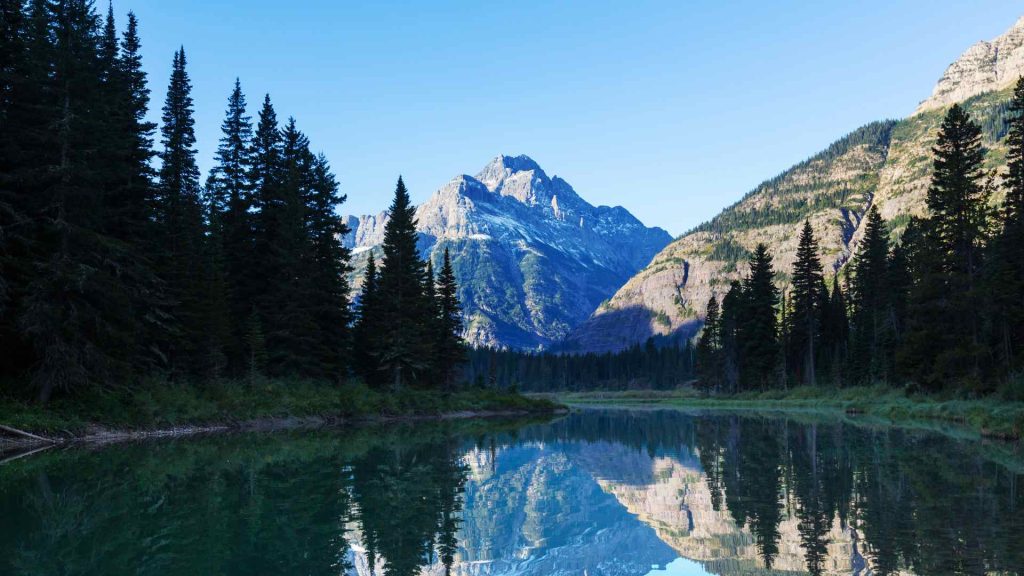
Uncommon and Local Nicknames
The Land of the Shining Mountains
Origin and Meaning:
- This nickname originates from the Native American tribes who inhabited the region, referring to the sun reflecting off the snow-capped Rocky Mountains.
Significance to Local Communities and Native American Heritage:
- The name honors the deep connection between the indigenous people and the natural landscape.
- It emphasizes the spiritual and cultural importance of the mountains to these communities.
Cultural Significance:
- The nickname is a reminder of Montana’s indigenous roots and the enduring presence of Native American culture.
- It highlights the natural beauty and majestic presence of Montana’s mountain ranges.
The Bonanza State
Historical Context:
- “The Bonanza State” reflects Montana’s boom periods, especially during the late 19th and early 20th centuries when mining was at its peak.
- The term “bonanza” denotes a rich mine or a source of great wealth.
Connection to Montana’s Mining History:
- Montana’s significant mineral wealth, particularly in gold and silver, justified this nickname during the mining rush.
- Cities like Butte and Helena flourished, becoming key economic centers due to mining.
Cultural Significance:
- The nickname evokes images of prosperity and the pioneering spirit of early settlers.
- It remains a testament to the state’s historical economic foundation in mining.
The Stump State
Origin and Meaning:
- “The Stump State” arose from the extensive logging activities in the early 20th century.
- The nickname references the numerous tree stumps left behind after logging operations.
Anecdotes and Historical References:
- Logging was a major industry in Montana, particularly in the western regions.
- Stories from logging camps and towns often describe the landscape dotted with stumps as evidence of the industry’s impact.
Cultural Significance:
- The nickname reflects the significant role logging played in the state’s development and economy.
- It serves as a historical reminder of the transformation of Montana’s forests and the logging heritage.
These uncommon and local nicknames provide a deeper understanding of Montana’s diverse cultural and historical landscape. They showcase the state’s rich heritage, from its indigenous roots and natural wonders to its pivotal industries and economic milestones.
Regional Nicknames
Eastern Montana: The Plains and Prairies
Descriptions of Local Geography:
- Eastern Montana is characterized by vast plains, rolling prairies, and open landscapes.
- This region features grasslands, badlands, and the Missouri River, providing a stark contrast to the mountainous west.
Cultural Significance:
- Known for its agricultural heritage, Eastern Montana is a major producer of wheat, barley, and other crops.
- The wide-open spaces symbolize the frontier spirit and the hardworking lifestyle of its residents.
Notable Nicknames:
- The Great Plains: Refers to the extensive grasslands that stretch across Eastern Montana and neighboring states.
- The Breadbasket of Montana: Highlights the region’s role in agricultural production.
Western Montana: The Rockies and Valleys
Descriptions of Local Geography:
- Western Montana is defined by its rugged Rocky Mountains, lush valleys, and dense forests.
- Major mountain ranges include the Bitterroot, Mission, and Cabinet ranges.
Cultural Significance:
- The region is known for its outdoor recreational opportunities, including hiking, skiing, and fishing.
- Home to numerous national forests and wilderness areas, Western Montana attracts nature enthusiasts and adventure seekers.
Notable Nicknames:
- The Crown of the Continent: Refers to the scenic beauty and high peaks of the Rocky Mountains.
- The Land of a Thousand Lakes: Emphasizes the numerous lakes and rivers found in this region.
Northern Montana: The Hi-Line
Origin and Significance:
- “The Hi-Line” refers to the area along the northern border of Montana, following the route of the Great Northern Railway.
- The name comes from the railroad’s position on the high plains of Montana.
Local Culture and Lifestyle:
- The Hi-Line is known for its small towns, agricultural communities, and close-knit populations.
- It features landmarks such as Glacier National Park and Fort Peck Lake, offering unique natural attractions.
Notable Nicknames:
- The High Plains: Highlights the elevated and expansive nature of the landscape.
- The Gateway to the North: Reflects its proximity to the Canadian border and cross-border interactions.
Southern Montana: Yellowstone Country
Connection to Yellowstone National Park:
- Southern Montana includes the northern entrance to Yellowstone National Park, one of the nation’s most famous natural reserves.
- The park’s geothermal features, wildlife, and scenic beauty draw millions of visitors each year.
Tourist Attractions and Local Pride:
- The region is a hub for tourism, with attractions such as the Gallatin and Beartooth Mountains.
- Cities like Bozeman and Gardiner serve as gateways to the park, offering hospitality and adventure services.
Notable Nicknames:
- Yellowstone Gateway: Emphasizes the area’s role as the primary access point to the park.
- Geyser Country: Reflects the geothermal activity and natural wonders found in and around Yellowstone.
These regional nicknames reflect the geographical diversity and unique characteristics of different parts of Montana. Each nickname encapsulates the essence of the region, highlighting its natural beauty, cultural significance, and local pride.
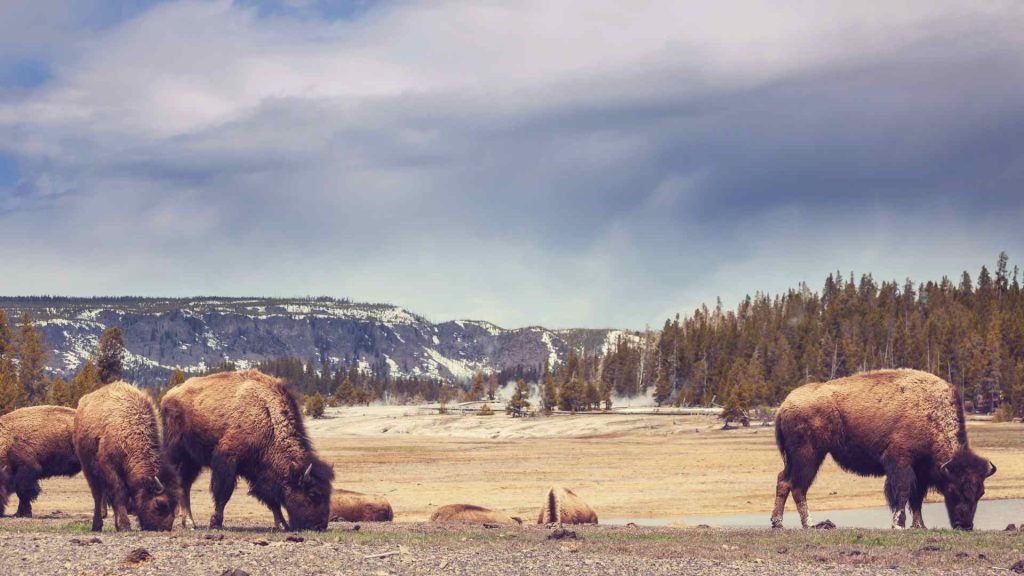
Nicknames for Major Cities and Towns
Billings: The Magic City
Origin and Meaning:
- Billings earned the nickname “The Magic City” due to its rapid growth and development since its founding in 1882.
- The name reflects the city’s transformation from a railroad town to a thriving urban center.
Local Culture and History:
- Billings is the largest city in Montana, serving as an economic and cultural hub.
- The city’s history includes a strong connection to the railroad industry and the Yellowstone River.
Cultural Significance:
- Known for its vibrant arts scene, outdoor activities, and historical sites, Billings embodies the spirit of innovation and progress.
- The nickname underscores the city’s dynamic growth and its role as a regional powerhouse.
Missoula: The Garden City
Origin and Meaning:
- Missoula is called “The Garden City” due to its lush, green landscapes and numerous parks and gardens.
- The fertile soil and favorable climate contribute to its abundant vegetation.
University Influence and Local Culture:
- Home to the University of Montana, Missoula has a youthful and vibrant atmosphere.
- The city is known for its strong emphasis on education, arts, and community events.
Cultural Significance:
- Missoula’s nickname highlights its commitment to environmental sustainability and outdoor recreation.
- The city is a cultural center, with festivals, music, and a thriving local food scene.
Bozeman: The Bozone
Origin and Meaning:
- “The Bozone” is a playful nickname for Bozeman, capturing its energetic and innovative spirit.
- The name is often used by locals to convey a sense of community and modernity.
Tech Boom and Modern Culture:
- Bozeman has experienced significant growth due to its burgeoning tech industry and high quality of life.
- The city attracts entrepreneurs, students, and outdoor enthusiasts, fostering a dynamic and progressive environment.
Cultural Significance:
- Known for its proximity to Yellowstone National Park and excellent skiing, Bozeman is a hub for outdoor adventures.
- The nickname reflects the city’s blend of natural beauty and cutting-edge development.
Helena: The Queen City
Origin and Meaning:
- Helena, the capital of Montana, is known as “The Queen City” due to its historical significance and stately architecture.
- The nickname dates back to the city’s early days during the gold rush era.
Historical Context as the State Capital:
- Helena was founded in 1864 during the Montana gold rush and quickly became a prosperous city.
- As the state capital, it houses important government buildings and historical landmarks.
Cultural Significance:
- Helena’s rich history is evident in its well-preserved Victorian buildings and historical sites.
- The nickname underscores the city’s regal charm and its importance in Montana’s political and cultural landscape.
These city nicknames reflect the unique identities and histories of Montana’s major urban centers. Each nickname offers a glimpse into the character and cultural significance of these cities, highlighting their roles in the broader tapestry of the state.
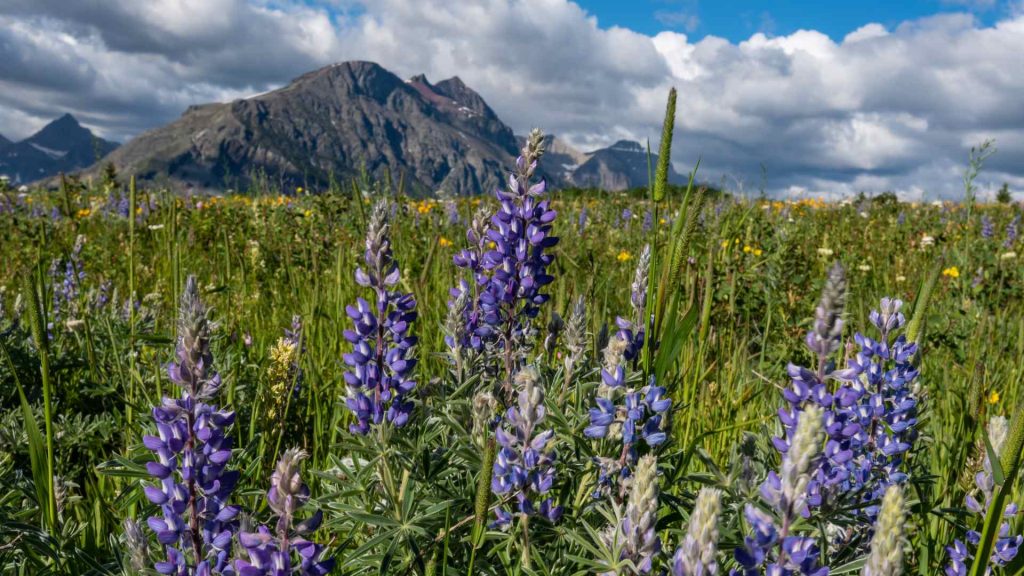
Cultural and Historical Context
Nicknames from Native American Heritage
Contributions of Indigenous Cultures:
- Native American tribes, including the Crow, Blackfeet, and Salish, have long inhabited Montana.
- Many place names and nicknames are derived from Native languages, reflecting the deep cultural ties to the land.
Significance of Names and Places:
- Names like “The Land of the Shining Mountains” come from the tribes’ descriptions of the natural environment.
- These nicknames honor the spiritual and cultural importance of the land to Native American communities.
Cultural Significance:
- Acknowledging these nicknames helps preserve the rich heritage and history of Montana’s indigenous people.
- It fosters a greater understanding and appreciation of the state’s original inhabitants and their enduring legacy.
Cowboy Culture and the Old West
Influence on State Nicknames:
- Montana’s history as a frontier state is deeply intertwined with cowboy culture and the Old West.
- Nicknames such as “The Last Best Place” evoke the romanticized image of wide-open spaces and rugged individualism.
Stories and Legends:
- Famous outlaws, lawmen, and cowboys have left their mark on Montana’s history and folklore.
- Tales of the Wild West continue to shape the state’s identity and appeal to those seeking a connection to America’s past.
Cultural Significance:
- The cowboy culture remains a vital part of Montana’s identity, celebrated through rodeos, festivals, and ranching traditions.
- These nicknames capture the spirit of adventure and independence that defines the state.
Mining and Agricultural Influence
How These Industries Shaped Local Nicknames:
- Mining and agriculture have been cornerstones of Montana’s economy and culture.
- Nicknames like “The Treasure State” and “The Bonanza State” highlight the state’s rich mineral resources and mining heritage.
Economic and Social Impacts:
- The mining boom brought wealth and development, leading to the establishment of numerous towns and cities.
- Agriculture, particularly in the plains of Eastern Montana, remains a significant economic driver, earning nicknames such as “The Breadbasket of Montana.”
Cultural Significance:
- These industries have shaped the state’s social fabric, fostering a strong work ethic and a sense of community.
- The nicknames reflect the pride Montanans have in their resourcefulness and contribution to the state’s prosperity.
These cultural and historical contexts provide a deeper understanding of the origins and meanings behind Montana’s nicknames.
From the rich heritage of Native American tribes to the enduring legacy of cowboy culture and the economic foundations of mining and agriculture, these influences have left an indelible mark on the state’s identity and are encapsulated in its diverse nicknames.
Unique and Creative Nicknames
Nicknames from Local Lore and Legends
Stories Behind the Names:
- Ghost Town State: Refers to the numerous abandoned mining towns scattered throughout Montana, remnants of the gold rush era.
- Examples include Bannack, Garnet, and Virginia City.
- Grizzly Country: Emphasizes the presence of grizzly bears in Montana’s wilderness, especially in regions like Glacier National Park and the Bob Marshall Wilderness.
- Stories and sightings of these majestic creatures contribute to the nickname.
Famous Figures and Events:
- Custer’s Last Stand: While not a nickname for the state, the Battle of the Little Bighorn is a significant historical event tied to Montana.
- The battle site is a national landmark and a symbol of the turbulent history between Native American tribes and the U.S. government.
Cultural Significance:
- These nicknames and stories add a layer of mystique and intrigue to Montana’s identity.
- They reflect the state’s rich history and the tales that continue to be told through generations.
Nicknames from Outdoor Adventures
Popular Outdoor Activities:
- Fly-Fishing Paradise: Montana is renowned for its world-class fly-fishing rivers, including the Madison, Yellowstone, and Missouri Rivers.
- The state attracts anglers from around the world seeking the thrill of catching trout in pristine waters.
- Hiker’s Haven: With vast networks of trails in national parks and forests, Montana is a top destination for hiking enthusiasts.
- Iconic trails include those in Glacier National Park and the Absaroka-Beartooth Wilderness.
Natural Landmarks and Their Nicknames:
- The Crown of the Continent: Glacier National Park is often referred to by this nickname, highlighting its breathtaking landscapes and ecological significance.
- The park’s rugged peaks, alpine meadows, and glacial lakes epitomize the beauty of Montana’s wilderness.
- The Gates of the Mountains: This nickname comes from the dramatic cliffs along the Missouri River near Helena, named by Meriwether Lewis during the Lewis and Clark Expedition.
- The area offers stunning scenery and opportunities for boating and wildlife viewing.
Cultural Significance:
- These outdoor-oriented nicknames underscore Montana’s reputation as an outdoor enthusiast’s paradise.
- They reflect the state’s commitment to preserving its natural beauty and promoting recreational activities.
Modern and Pop Culture Influences
How Recent Trends Have Shaped New Nicknames:
- Tech Frontier: Bozeman and Missoula have seen growth in tech industries, earning reputations as innovation hubs.
- The influx of tech companies and startups has brought a modern twist to these traditionally outdoor-oriented communities.
- Hollywood’s Backlot: Montana’s scenic beauty has made it a popular filming location for movies and TV shows.
- Productions such as “A River Runs Through It” and “Yellowstone” have showcased the state’s landscapes, boosting its appeal as a filming destination.
Influence of Movies, Music, and Celebrities:
- Country Music’s Heartland: Montana’s rustic charm and cowboy culture have inspired numerous country music songs and artists.
- The state is often referenced in lyrics celebrating the simplicity and beauty of rural life.
- Celebrity Hideaway: Many celebrities, drawn by the state’s privacy and natural beauty, own properties in Montana.
- This trend has contributed to the nickname “Hollywood’s Hideout,” as stars seek refuge in the state’s tranquil settings.
Cultural Significance:
- Modern and pop culture influences have added a contemporary layer to Montana’s identity.
- These nicknames highlight the state’s evolving appeal and its ability to attract diverse interests, from tech entrepreneurs to Hollywood elites.
These unique and creative nicknames showcase the multifaceted nature of Montana. They reflect its rich history, outdoor allure, and modern-day appeal, providing a well-rounded picture of the state’s dynamic identity.
Conclusion
Montana, with its vast landscapes and rich history, boasts a plethora of nicknames that reflect the state’s unique character and charm.
From the well-known “Treasure State” and “Big Sky Country” to the more localized “The Hi-Line” and “The Garden City,” each nickname tells a story about the place and its people.
These monikers are not just labels; they are woven into the fabric of Montana’s identity, celebrating its natural beauty, cultural heritage, and pioneering spirit.
